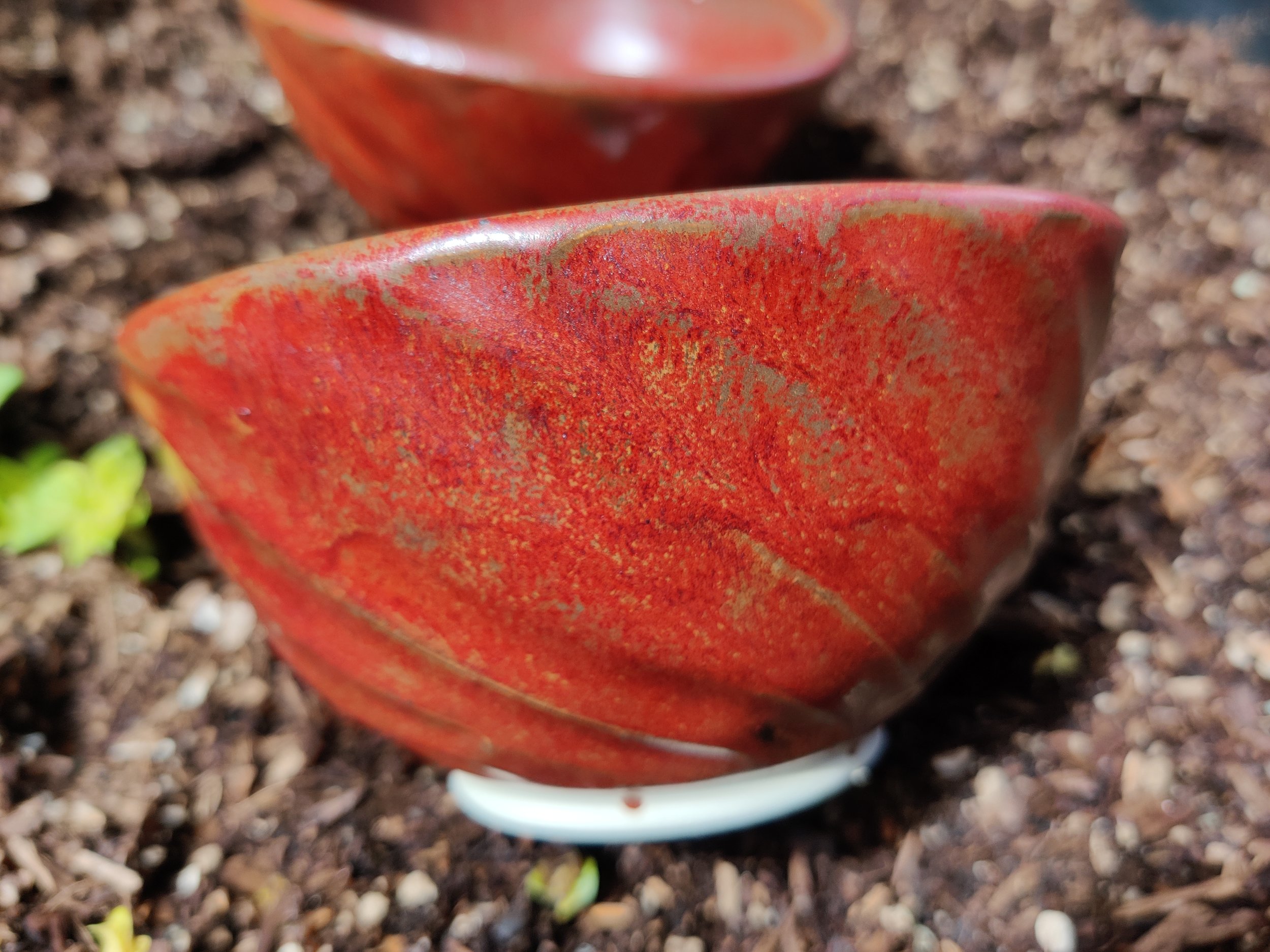Leaving red
I often get into a development cycle that looks like small improvements over the course of a three-four month period. This cycle was the development of my new “Gara’s red glaze” along with the search for combinations to go with it. As a closing chapter on the development of this glaze were going to take a look back at some pictures, combos, and some things we have learned in practice along the way. Lets lay it all out here.
Firstly, the glaze gets it’s name from an anime character names Gara of the sand”. It’s nothing too deep.
Gara of the sand
Secondly This glaze was a long, difficult, but lucky development. Making a cone 6 oxidation red is easy once you have a sting of factors. So far I understand that reds ( in oxidation are best developed around 1700-1800 degrees f on s slow cool cycle. Otherwise they have a tenancy to turn brown. They also require far less iron than I originally thought. Usually you see red glazes at this range around 15% R.I.O. I use 11.5% Y.I.O. I know chemically there is not much of a difference between Yellow and red iron oxide but Having experimented with both I prefer Yellow. It seems to be a lighter version of R.I.O when tested. My main thought was “R.I.O always turns brown or too dark red for the vibrence of color I want, maybe Y.I.O will be abit lighter” and it was.
Third, The original glaze recipe I Had put an amount of Lithium carb in the glaze. Lithium carb is fine but it comes with two main problems. It’s water soluble and I can use frit 644. Frit 644 is also water soluble but it’s much more powerful in comparison.
Lastly, and this is my biggest pet peeve when it comes to glazes, they always have way too much silica in them. Do you understand how many things have Silica in them? It’s almost every mineral you get has some amount of it. This is A problem for me because this means my glaze has to do more work to “melt” at the correct temp. It’s almost like I am wasting energy melting all this silica. I very often take Silica out of my recipes little by little just to see the efficiency go up over time.
With the understanding of all these factors I was able to create this, Gara’s red”
Gara’s red on porcelain. You can see the left over Y.I.O I was talking about. This will often not happen with R.I.O
Gara’s red on porcelain. It has great stability even with texture.
Gara’s red on redstone. Strangely enough it turns a little more red on a red clay body. I imagine this is because the iron in the natural clay enhances it. Notice the breaking lines are black instead of yellow on a red clay body.
Gara’s red on red stone.
As I am very happy with this glaze this marks the end of the development cycle with finding a good red in cone 6 ox. the only thing left to do now is to test it on a straight up and down, no hold kiln load.





